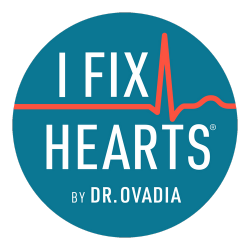Cardiovascular disease is an umbrella term that includes all heart-related illnesses along with some other conditions such as deep vein thrombosis (DVT). There are four main forms of cardiovascular disease (CVD):
In this article, I’ll explain how to reduce your risk of developing CVD and potential symptoms that you should look out for.
The risk factors and symptoms for CVD
CVD is a term that encompasses many heart related illnesses, and the risk factors are generally the same for all of these. If you want to work on heart disease prevention then these are the common risk factors that you need to focus on:
- High blood pressure
- Poor diet
- Sedentary lifestyle
- Smoking
- Excess alcohol consumption
- Chronic stress
Thankfully all of these factors are controllable, which means that improving heart health stems from taking control of your health and making heart healthy decisions.
Although there are a wide range of symptoms that can be seen with CVD, they’re often subtle enough that they can be easily overlooked or dismissed as something else. The common symptoms include:
- Chest pain
- Sickness
- Stomach pain or indigestion
- Aches and pains
- Swollen ankles
- Tiredness
- Irregular heartbeat
If you experience any of these symptoms or have any concerns then you should raise them with your doctor.
How to reduce your risk of cardiovascular disease
Heart disease prevention is always better than treatment. Yet in the medical field there is a general lack of focus on the role of cardiovascular training, with a preference for medications or procedures used as a remedy for heart disease.
Heart disease prevention comes from you, and the changes that you can make in your day-to-day life. All of the risk factors noted above are also indicators of poor metabolic health, so step one of cardiovascular training is working to achieve good metabolic health.
That may sound daunting, but here’s the good news: becoming metabolically healthy can be achieved through simple lifestyle and dietary changes. In my experience as a heart surgeon, the most common mistakes people make when it comes to their health are dietary, and this is largely due to all the conflicting information that is out there.
Ignore the food pyramid
For many years we have lived under the guidance of the food pyramid and the official guidelines of corporate-sponsored bodies like the AHA. Yet despite these readily available rules for heart healthy eating, more than a third of our population is obese.
And I was part of this statistic while following these guidelines.
It’s clear from the unacceptably high rates of chronic illness that there are major issues with the dietary advice we are being given and yet this advice has barely changed in the past 40 years.
How to actually eat for metabolic health
Eating a heart healthy diet is much simpler than many people think. Forget the labels on food products in the supermarket and the fad diets you see promoted.
Instead, aim to eat what grows in the ground or things that eat what grows in the ground. This means things like animal products, vegetables, sweet potatoes and so on. Another guideline is to avoid foods that are made in a factory and are bought in bags or boxes.
Fries, pastries, cereals and sugary drinks certainly don’t grow in the ground and have no place in a heart healthy diet.
Other ways to improve your metabolic health
There are a lot of methods for improving metabolic health and they all revolve around simple, easy to implement lifestyle changes like reducing alcohol intake, avoiding tobacco products, and implementing exercise as part of your daily routine.
This doesn’t mean that you have to get a gym membership and devote huge blocks of time to working out. You can start by adding short walks, like a ten minute stroll after breakfast or lunch.
Metabolic health is also trackable by using five markers, including your wait circumference, blood pressure, and blood panel readings. You can receive a baseline assessment now, and visibly see your progress from one month to the next, so you’re never guessing.
If you’re looking to take control of your health and would like tailored advice for your specific situation, book a free telehealth call with me here.
